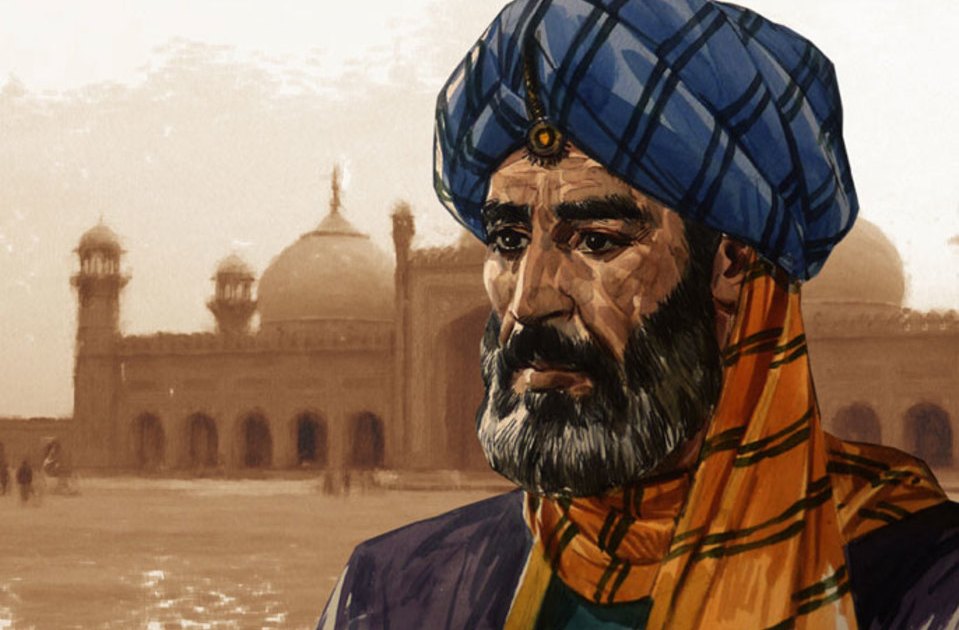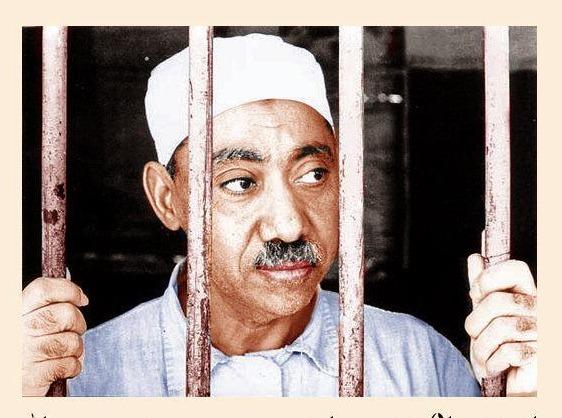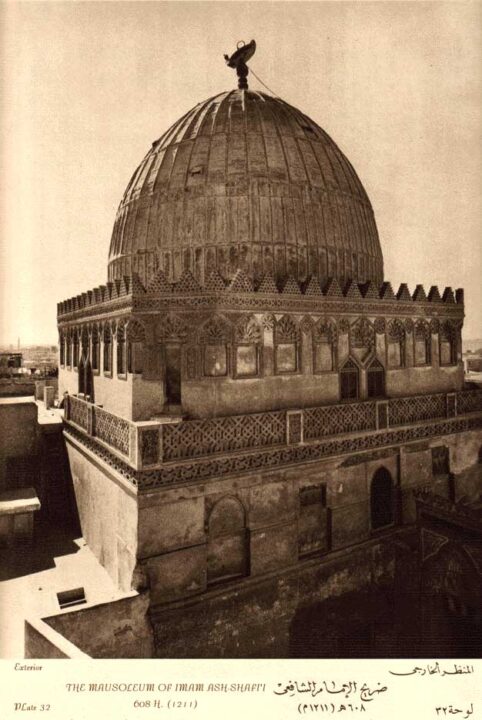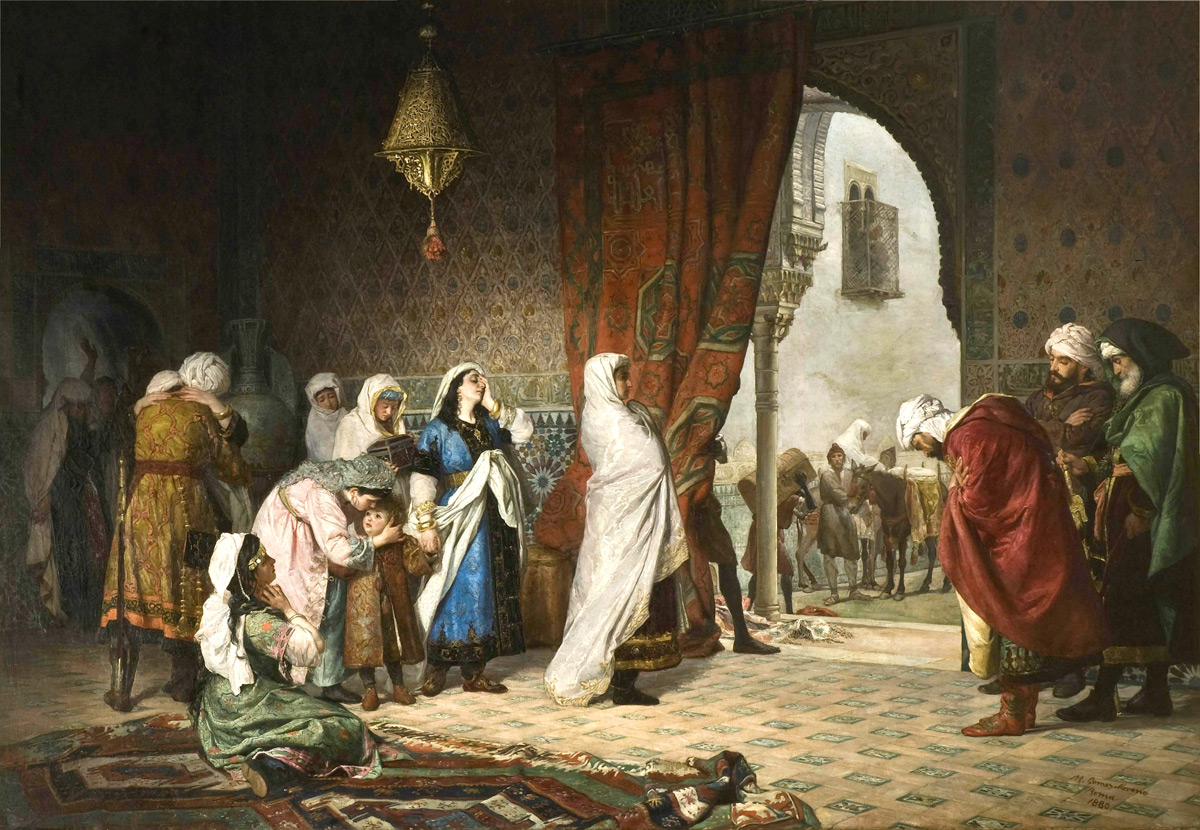A Fourth Generation (asymmetrical, Guerrilla) War in Central Asia.
How do Western and Pakistani Armies develop their military operations against the Taliban and al-Qaeda? What is the idiosyncrasy of the 40 million Pasthuns who live in the territories infected by them? How is the Pashtunwali or honor’s code of their tribes? How can be better attacked the presence, a perfect control does not exist, of the rebels and terrorists in the wide zone on both sides of the «Northwest border» Afghan Pakistani? The instruction, the omnipresent use of the heavy fire support and the mentality of the great modern armies, do they facilitate the efficient military operations against indomitable fanatic religious rebels in their own lands?
The social and military situation in Afghanistan and Pakistan.
The Taliban and al-Qaeda form two vertically organized movements and from below to up. The ideological and geographical nearness allows them to collaborate tactically. That does that its cells do not know exactly which are the higher chiefs. They only know where they have to go to receive support or to send or to receive information or to communicate with another «peer» cell. The commands of these movements act by exception, not by presence or by deliberate action. This allows them to operate well, without the intervention of its high commands. The death of the mullah Omar and two or three chiefs in an American bombardment, would concern little its efficiency, its real military irregular levels of action. The «martyrdom» of the aforesaid or Bin Laden or his «managing director» al-Zawahiri would perform almost equal importance as their existence.
The operative key of the Taliban resides in their innumerable local chiefs (sheiks), with their small guerrillas bands. They are the persons in charge of intimidating, teaching, scaring, attacking and occupying more or less temporarily some of the numerous settlements and hamlets. According to the pressure degree that they should exercise on the villagers in order that they inform them, hide them and support them. Evidently its elementary degree of operative development keeps the movement at the defensive. Without being able to dispute to any of the present Armies in these areas, any territory or village. Without being able to realize other attack actions beyond ambushes, assaults to very small enemy isolated units, harassment by medium range fire, kidnapping, short duration isolated incursions and ways and paths mined. Ideologically concentrated in the conversion to their movement, to their semi nomadic cells, of the most related or nearby Pashtuns. In a minor and less extensive degree, operate the more independent cells of al-Qaeda in Afghanistan and Pakistan.
Their usual procedure for assault a weak defended or without fighting spirit position is this: at dawn they bombard with the fixed rocket launchers heavy fire, then they approach to use mortars, finally, the assault it is realized by several independent squads, that converging advance shooting AK and RPD or PK machine gun bursts and their RPG and RL personal grenade-launchers.
Afghanistan almost lacks asphalt roads: there are only two. The most important gives itself a round turn all over the country, joining the principal populations, Kabul, Kandahar, Herat, etc. So they called it Ring Road. Then there is the North-South Road, which follows this tour, at the east of the country. They are not great thing. The asphalt have between half and one inch of thickness; the heats soften it and pot-holes and bubbles are easily formed. But, under a protuberance can hide an explosive device. It is necessary to cross slow the roads, looking at the soil and looking over the horizon, searching for carelessness observers, not very distant. The Taliban have the habit of recording on video the ambushes, to hang them on Internet. They are not in the habit of using cables activators; these are expensive and weigh, and the rebels are in isolated zones and the logistics is weak and complicated. The devices are activated by the pressure of the vehicle or by an frequency transmitter with a given range; even serves an electronic opening door device. With the frequency inhibitors, the soldiers try to offset the radio waves in the probable frequencies used in the zone. Being the most expensive and complicated transmitters, that with more range, power and frequencies range. It is the game of the cat and the mouse. The problem is that the guerrillas of an area receive a radio activator that uses an unforeseen frequency.
As for the usual attack by the light and medium weapons fire, the guerrillas do not approach too much. They are less trained and equipped than that the professional military men. They act roughly scourging. Their more frequent weapon, the AK in its variants 47 and M are not precise beyond 150-175 m., in linear shooting. The mortars fire turns out to be imprecise and can be eluded against a mounted patrol. Nevertheless, against the civilians and the vehicles and goods traffic these assault skills are sufficient and effective. The most terrifying and effective weapon of the Taliban is the illuminated fanatic suicidal. That looks for, as passport to the Houris’ Garden (it is not an eternal prize!!), to carry with him the major number of dead and mutilated enemies. But the attacker could be a religious madman, but is not an idiot. The suicides do not attack the military prepared or fortified positions. Endowed in their defensive perimeter with complicated wire fences, pits, walls, spaces between obstacles, alarms. Because they know that the explosion will vanish in the air and that they will not let him to approach the sentries outposts, because already they are waiting for him. The principal weapon of the suicide is not his explosive belt or jacket. They are the surprise, the freedom of action and the initiative.
The units of the Allied armies (in Afghanistan) or of the Pakistani army act employing battalions and regiments. With the battalion forces they try to sweep a zone in a direction, in whose opposite limit they have deployed a military «bolt». With a regiment they are in the habit of carrying out a search and annihilation operation in a given area. They are probably too much forces. The highland guerrillas have a natural weapon which lack the soldiers trained in «our way «: the patience and sobriety. In Vietnam they were lonely raised to the trees, and there were silently and stilly waiting, until the crossing of the soldiers who were sweeping the operational zone. Covering with mud the roof of an Afghan hut, it prevents the observation of its interior by the thermal vision airborne devices, crewed or not.
In 2002 the Pakistani began to send troops to the Waziristan and other Pashtuns zones, reaching progressively 80 thousand deployed men there. In their operations, destroyed Taliban training fields and captured many terrorist chiefs. But their regular war tactics and techniques, alienated them the favor or the neutrality, according to the cases, of the tribes, since there were taking place very easily civil innocent victims with them. Finally, in the autumn of 2005 the Government reached an agreement with the tribe chiefs or Maliks, moving back from the zone. It was a low intensity conflict: in the last 2 years 700 military men died. The problem was that it was clearly seen that the military men could not dominate the Pashtuns areas and clean them of terrorists. Since then, the reprisal raids are sporadic and punctual, over detected and given targets, which not always is obtained or destroyed.
The geographical space of the Pashtuns tribes (Afghans and Pakistani).
From Pakistan, looking from the Punjab (or «the land of the five rivers») towards Afghanistan, appears the great bed of the Indus river. This acts as geographical border with the Pashtuns lands, forming an enormous natural moat, which never stopped their raids. Then appears an irregular mixture of plains and mountainous spurs, in lands that turn out to be fertile when they can be watered, shaped by the first heights of the Suliman great mountainous chain. Beyond, the big mountains crown. Towards the north, forming perpetual snow zones, there are Alpine type pastures and heights forests, up to reaching the spurs of the massive chain Hindu Kush. Towards the south, spread the lowest Waziristan mountains, in which appear rocky outcrops at more than 3000 m. of altitude. Descending more toward south, are bush covered spurs and gullies, up to the desolation of Zheb and Mekran areas, already near the Indian Ocean, in the Baluchistan.
These intricate heights provide a wall that prevents massive invasions from one or another side of them, provided the passes are dominated. The most famous still nowadays is Khiber, since it opens the way between Kabul and Peshawar.
In the Baluchistan live the Baluchi, Braui and Pashtun (in the northern part) etnia tribes. In the South and North Waziristan’s regions the Pashtuns are more concentrated, forming a real Pakistani Pashtunistan. Within the great pashtun etnia, the Mahsuds (these specially inclined to break the agreements and treaties) are in the Waziristan central zone, the Wasirs and the Afridis live in the zone of Tirah and the Mohmands, at the north of Tirah. The zone of Chitral, at the north of the border, is formed by the Bajaur, Dhir and Swat districts. The Waziristans are the most problematic, independent and turbulent tribes. Their lands are poor and rough, in which scarcely they find an elementary sustenance. Formerly, up to the first third of last century, they were in the habit of descending occasionally in armed raids up to the Indus valley. To obtain value goods, mounts, jewels, foreign women, attacking and harvesting its inhabitants, which were Hindu of race and religion, and therefore, unbelievers. More to the south-east of the lands of these tribes, without coming yet to the Indus valley, are the lands also mountainous of the Khattaks, Bangashis and Yusufzais, all also Pashtuns. Tribes that produced first class Sepoys for the semi irregular British units operating in these zones.
The Afghan heights around the border with Pakistan are the other great slope west of the mentioned mountainous chains, crowned at the north of the country by the great Hindu Kush. The absence of European explorers in the Afghan side (Afghanistan was an independent country opposite to Russians and British), does that they are less studied and very little known by non specialist people.
In Afghanistan, the Pashtuns are at the south and south-east, reaching 35% of the population and around 12,5 millions persons. Another important Afghan etnia are the Uzbecs (10%) and the Tajiks (25%), which live in the north of the country, bordering the Tajikistan and Uzbekistan independent republics. In the center live the Hazaras (20 % of the population), related with the Persian and in the south are the Baluchis (10 %), related, in turn, with the Pakistani Baluchistan tribes. The flow of Afghans, specially Pashtuns, towards Pakistan or coming back home, when the military conditions are smoothed, does that the figures, lacking for decades of an official census, are variable and vague.
In Pakistan are 4 great etnias: the Pashtuns, the Punjabis, the Sindhi and the Baluchis. Precisely, the country is nowadays divided in four big provinces: Punjab, Sind, Baluchistan and the Northwest Border, each one formed by numerous administrative districts. There exists an autonomous tribes zone, that goes between the last province and the border with Afghanistan and that is governed by the central federal authority. The tribal zone possesses 7 tribal agencies and 6 small districts. The individuals of Pashtun etnia are approximately 25 millions in the country.
After the independence of Pakistan in 1947, the dispute arose with Afghanistan for the possession of the wide frontier tribal zones, which was looking for its exit to the sea. Both countries almost came to the armed conflict, until they signed in 1963 an agreement of borders determination. The borders existing during the British domain were ratified in it. And Afghanistan stayed as an interior country, without access to the sea routes.
Social anthropologic particularities of the Pashtuns tribes.
The internal relations of the groups, families and local families groups and clans, are characterized by incorporating into them certain rites, rules, attitudes and taboos. These gather, value and quantify their vital needs, their primary emotions and their beliefs. The Islam is rigorously followed in the wide zone we treat. They are all of the sunni branch, that accepts the Koran and the Prophet Sunna, his acts and remarks (hadices) due gathered by his disciples, as the orthodox sources of Allah’s revelation to the men. The differences reside in the rigor with which they examine and accept the sources of the Sunna. This assumption forms a part of the social inculturation, strengthening and cohesion of these groups.
These societies agree and are ruled by an authority, more or less respected and obeyed. The more be perfected and advance towards the exterior the society, the power of this authority will become strong and grow and will spread in influence areas. The smaller and isolated is the group, the authority power will be more moderating and integrating, acting as the first between the «equal ones». In these last cases, the meeting of the active members (men, hunters) of the clan in assemblies, “jurgas” (in its language), etc., has supreme and sanctioning value of the deviant or solvent conducts for the group. Evidently, in these local councils, the prestige and the power of each individual member counts, and in them some are more «equal» than others. These local chiefs or Maliks are like favored negotiators with the different governments, who enjoy a personal more than institutional authority, and whose agreements can be ignored by the adult males, if are not confirmed by the assemblies.
Their code of customs and honor is the Pashtunwali. It establishes to the individual certain rights and demands from him certain social duties towards the family, the clan and the tribe. The basic disputes on women, gold or valid money and lands are in the origin of the durable hatreds in these tribes. And that must be kept up to avenging the perceived affront. The own fragility and weakness of the society demands the appearance of the protective values. These might be the hospitality, the loyalty, the friendship, the scorn of the strange, the revenge of affronts and damages, the individual and collective honor. Each of them protects and enlarges in some measure or shade the small human group. As we will see the relations they are interpersonal, in the areas of the family, the clan and the region. They are projected by the opportunity, the nearness, the exchange of goods and the relation. And become strong with the loyalty, the respect of the accepted procedures and the treatment time. And depending on the accumulation of these elementary successive acts. A stranger can aspire this way to his integration, in a personal manner. And not for the quality or importance of his category or institutional position.
The hospitality takes implicit the reciprocity, when one travels, is alone and is not aggressive. This sometimes is perfected by the endowment of an escort to the traveler through insecure zones. The violation of this «escort» by an assault supposes a serious affront for the clan that provided it. The loyalty between the members of the group, sometimes very unstable, cohesion it. The honor inflates the self esteem and appearance before everybody. The revenge, in absence of a real justice, search to punish and then to repair the damages and affronts real or perceived. The scorn of strange not adorned with good qualities or menacing the group, seeks to prevent a priori their integration in it, as a passive defense form. The friendship embraces the ties with the equals and within the group. If someone joins these elementary groups, he is object of loyalty and friendship in a personal way. These values would increase by his performance, ways and personal behavior. It would be the case of a native forces chief, accepted by them for the pays, the honor and the status that they offer and project on the regional clans. The acceptance is not with the cargo, but with the person.
Another characteristic of the social organization of these frontier semi independent tribes is that they stimulate a relative endogamia. With it they seek to isolate, to protect, to support or to increase their idiosyncrasy, influence and patrimony. But, without been biological harmful its use. As it would be between the members of the same family or small or nearby clan. In effect, the marriages not only suppose and carry individuals exchanges between the families of the married. They also produce exchanges and flows of gifts, visits, relations and power plots. In a few little evolved societies, living in a difficult way and, sometimes surrounded temporarily by hostile, the matrimonial relations produce a «revenue», an increases of social positions, influences and goods, which are very estimated by the families.
How is it necessary to confront the approximation towards the frontier tribes and foment their pacification? So that they isolate and expel the violent radical elements. And assume a more lasting and strong ties with the central authorities of both implied countries.
The highland villages are numerous, small and spread for both sides of the common border. In them can be camouflaged a small group of «regulars» Taliban, waiting that the jerky military flood passes away. Apart, the Taliban enjoy a complicated system of natural caves, reinforced by communication tunnels, endowed with extended zones for waiting and the storage of all classes of goods. This system is used to facilitate the traffic between both countries, without having to use the frontier passages or the most habitual and known gorges, as «parts» of the complete journey. And as temporary refuge, when the Allies carry out reprisal or rebels searching operations, on Pashtun zones where they have been more active. Taliban are Pashtuns. Only are distinguished from the local tribes by their major religious proselytism and military activity. Some of the villagers whom the soldiers meet in their patrols and searches, could be «part-time» Taliban and sympathizers. Two or three men of a native group that pass along a rural way, can be a Taliban team moving across.
Here it is possible to exploit an atavism that survives in all the collectivities. And that is shackled by the civic and moral education in the so called educated nations. And that is the egoism, as original fruit of the defense need and of the chronic shortage of original resources. That generates in the most primitive societies a distrust towards the non nearby neighbor, who is collectively estimated as a competitor and a probable enemy. The Taliban are foreign in Pakistan, and committed in a foreign war. Apart from their select and absorbent radical interpretation of the sunni Islam. Following the mentioned general guidelines it is easy and simple, though laborious and necessarily progressive, to achieve that the Pakistani Pashtuns close up their lands to the Taliban. Avoiding this way the spread of their doctrine and methods. And the extension of their operative refuges towards the west of the Indus, which always will prevent their possible eradication of Afghanistan.
The military operations in the modern wars (of third generation) demand to detect the most rapid and precisely a mechanized enemy, along all his deployment, up to his reserves. Then attacks him with ground and air heavy fire, including tactical rockets. But here the enemy is evasive, dispersed, worse armed, bad trained, unruly. He is native, is tough and scanty, hides easily, is a born predator, usually does not defend his positions. The operations of the military big units and units let escape the guerrilla teams, through infinity of tactical «interstices» or microvacuums of military «combat capacity». It is necessary to operate with nearness at his microtactical military level. To the diffuse, tenuous, but omnipresent «swarm» of the Taliban is necessary to interpose a civic military «swarm». Formed by voluntary elements, more qualified, professional and trained than the guerrillas.
It is necessary to create small «action units», for combined “social military” actions. That are capable of reaching the Taliban habitat and to expel them from it, progressively and firmly. Interposing between them and the tribes, his real guerrilla habitat. Units that, in its basic or standard model, would be formed by a squad of infantry light local loyal trained forces, a squad of professional foreign infantries and a group of civil technical personnel for tribe promotion and education with suitable material. Its logistics and support will be based on ground units and heliborne forces, centrally controlled from 2 or 3 near operative bases. And complemented by mobile columns in vehicles or of cavalry, forming a support patrols’ network in a region.
Once made firm these small flexible units, can arrive there major forces and brigades of work and education, to go garrison the zone and stimulating its social improvement. It is necessary to possess money to buy the will of collaborators and sympathizers. This can become facilitating work and social distinction to them. And to realize the necessary plans of development.
To eradicate the opium crops can be an independent strategic goal. And it is necessary to value very well its opportunity and possibility for every small zone. It is necessary to offer the natives an alternative of peace, progress and well-being, within their beliefs and ways, in order that they expel the Taliban.









 IMAM ABU HANAFI
IMAM ABU HANAFI
